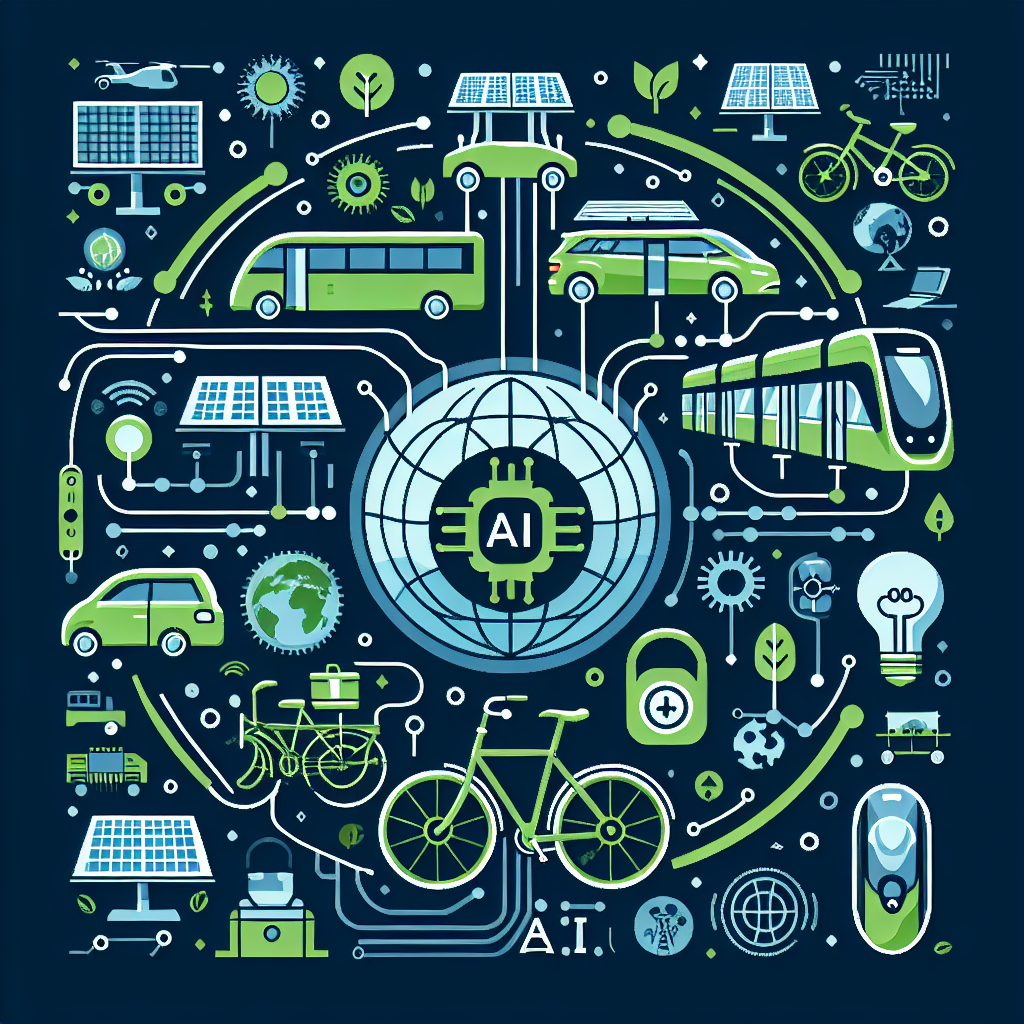Artificial intelligence (AI) has been revolutionizing various industries, and sustainable transportation systems are no exception. The integration of AI technologies in transportation systems has the potential to improve efficiency, reduce carbon emissions, and enhance overall sustainability. In this article, we will explore the various applications of AI in sustainable transportation systems and how they are transforming the way we move people and goods.
AI Applications in Sustainable Transportation Systems
1. Traffic Management: One of the primary applications of AI in sustainable transportation systems is traffic management. AI algorithms can analyze real-time traffic data from sensors, cameras, and other sources to optimize traffic flow, reduce congestion, and minimize fuel consumption. By dynamically adjusting traffic signals, rerouting vehicles, and providing real-time traffic updates to drivers, AI can help reduce travel times and emissions.
2. Predictive Maintenance: AI can also be used to predict maintenance needs for transportation infrastructure, such as roads, bridges, and tunnels. By analyzing historical data and sensor readings, AI algorithms can identify potential issues before they occur, allowing for proactive maintenance and preventing costly repairs. This not only improves the safety and reliability of transportation systems but also reduces downtime and environmental impact.
3. Autonomous Vehicles: Perhaps the most well-known application of AI in transportation is autonomous vehicles. AI technologies, such as machine learning and computer vision, enable vehicles to navigate roads, interpret traffic signs, and respond to changing road conditions without human intervention. Autonomous vehicles have the potential to reduce accidents, improve traffic flow, and increase fuel efficiency by optimizing driving patterns.
4. Ride-sharing and Mobility Services: AI-powered ride-sharing and mobility services, such as Uber and Lyft, have transformed the way people commute in urban areas. By leveraging AI algorithms to match drivers and passengers, optimize routes, and predict demand, these services have made transportation more efficient and convenient. In addition, AI can help reduce the number of vehicles on the road, leading to lower emissions and less traffic congestion.
5. Energy Management: AI can also play a crucial role in energy management for sustainable transportation systems. By analyzing energy consumption patterns, optimizing charging infrastructure for electric vehicles, and integrating renewable energy sources, AI can help reduce the carbon footprint of transportation systems. This can lead to lower operating costs, increased energy efficiency, and a more sustainable transportation network.
FAQs
Q: How does AI improve traffic management in sustainable transportation systems?
A: AI algorithms can analyze real-time traffic data to optimize traffic flow, reduce congestion, and minimize fuel consumption. By dynamically adjusting traffic signals, rerouting vehicles, and providing real-time traffic updates to drivers, AI can help reduce travel times and emissions.
Q: What are some examples of AI applications in autonomous vehicles?
A: AI technologies, such as machine learning and computer vision, enable autonomous vehicles to navigate roads, interpret traffic signs, and respond to changing road conditions without human intervention. Autonomous vehicles have the potential to reduce accidents, improve traffic flow, and increase fuel efficiency.
Q: How can AI help predict maintenance needs for transportation infrastructure?
A: AI algorithms can analyze historical data and sensor readings to identify potential issues before they occur, allowing for proactive maintenance and preventing costly repairs. This improves the safety and reliability of transportation systems and reduces downtime and environmental impact.
Q: What are the benefits of AI-powered ride-sharing and mobility services?
A: AI-powered ride-sharing and mobility services, such as Uber and Lyft, have made transportation more efficient and convenient by matching drivers and passengers, optimizing routes, and predicting demand. These services can reduce the number of vehicles on the road, leading to lower emissions and less traffic congestion.

